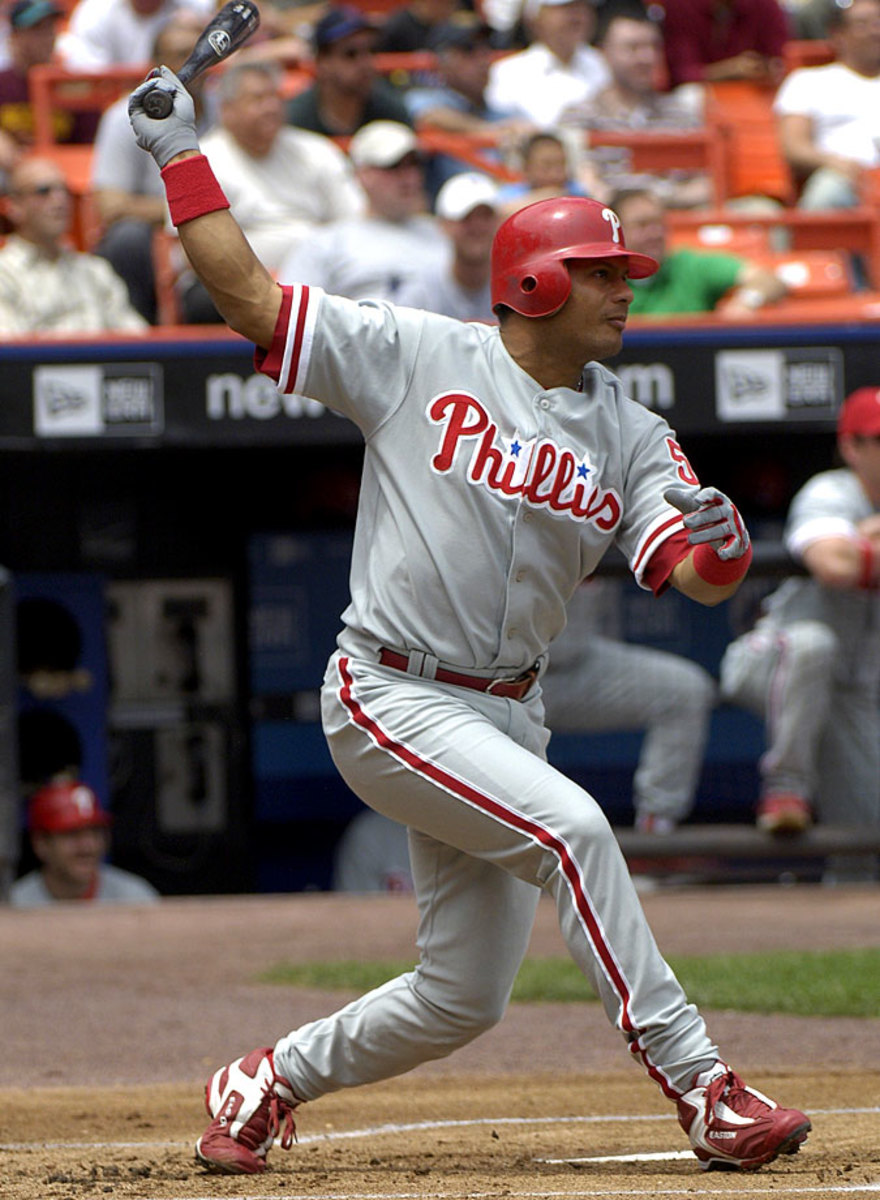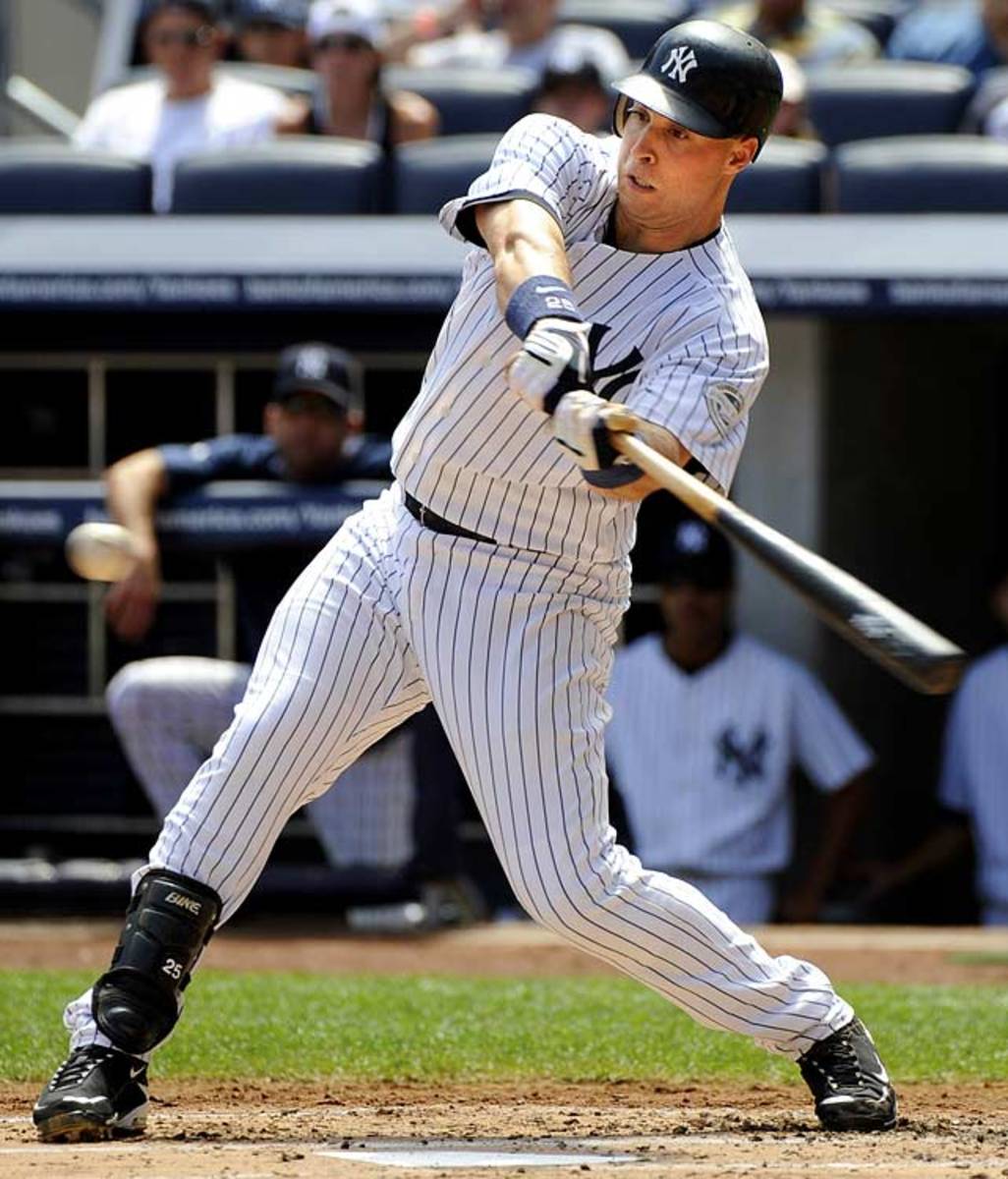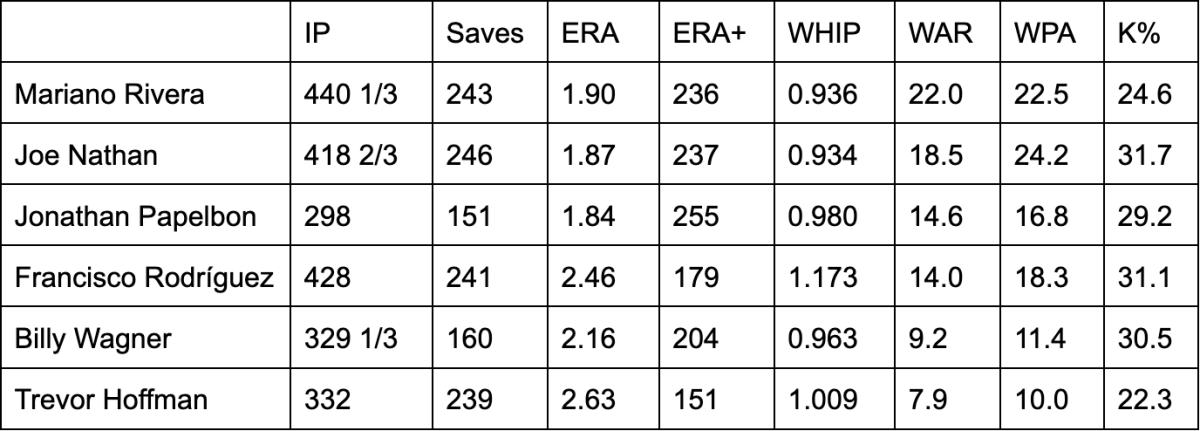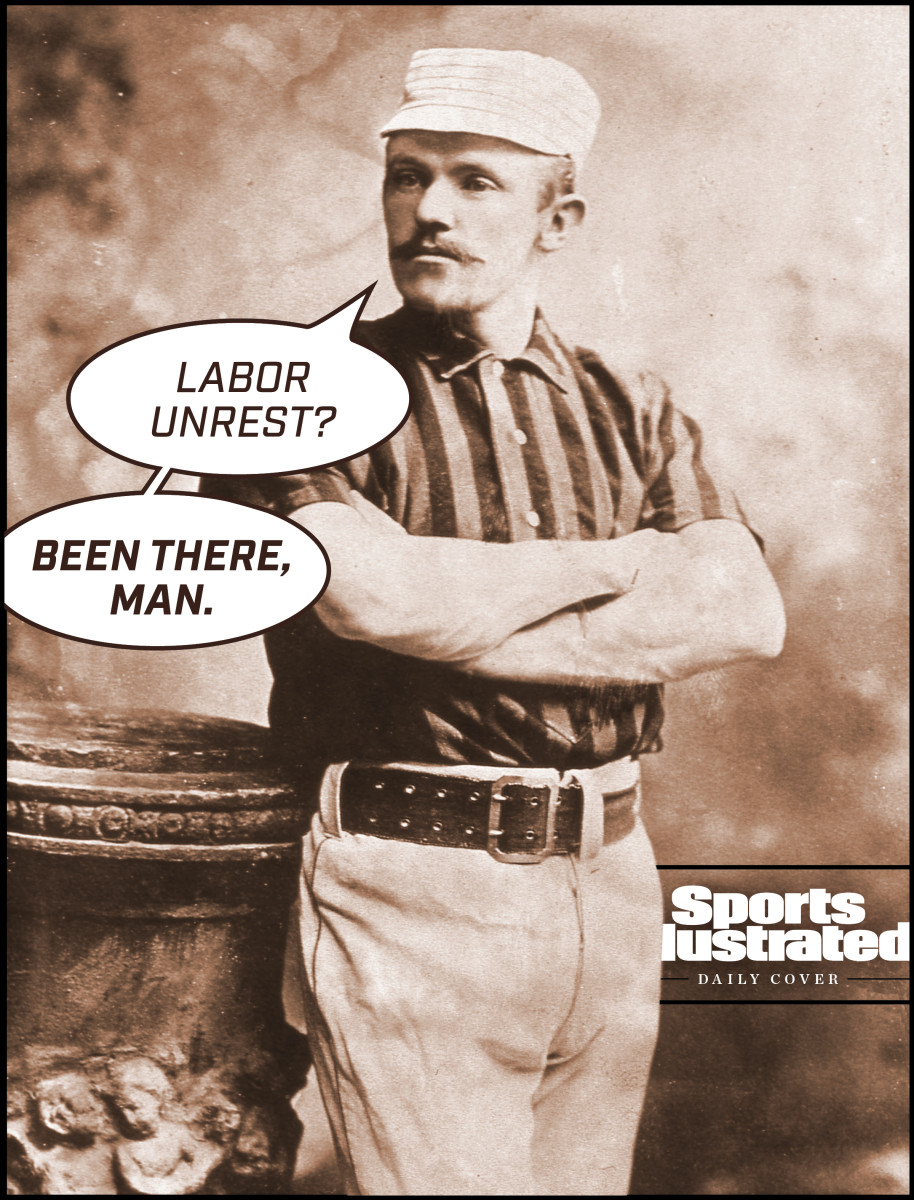First-Year Baseball Hall of Fame Candidates Who Deserve a Longer Look

In early 2020, just after the results of the 2019 Baseball Hall of Fame ballot were revealed, I wrote a column calling for the Hall to get rid of its 5% rule. Most readers of the Five-Tool Newsletter probably know the rule, but let’s explain it just in case. To be considered for election to the Hall of Fame by the Baseball Writers Association of America, players must have “received a vote on a minimum of five percent (5%) of the ballots cast in the preceding election,” unless it is their first year of eligibility, according to the Hall of Fame’s website.
My focus in that piece was Bobby Abreu, who ultimately did get enough support to remain on the ballot for another year, though just barely. He needed 20 votes to clear the threshold; he got 22. He gained support last year (8.7%), and as of Friday morning he has appeared on 18 of the 134 ballots (12.8%) tracked by Ryan Thibodaux (@NotMrTibs on Twitter). He needs three more votes to clear 5%.

Abreu’s Hall of Fame case is interesting. He was perhaps the most underappreciated player of his era—he made just two All-Star teams and never finished in the top 10 in MVP voting—but his career was one of remarkable consistency. Over his best 10-year stretch from 1998 to 2007, Abreu slashed .302/.411/.505 and averaged 22 homers, 29 stolen bases, 157 games played and 5.2 WAR per season. In his prime, he was also a good base runner and defender. His 60.2 lifetime WAR is 19th among right fielders, just ahead of two of his contemporaries, Ichiro Suzuki and Vladimir Guerrero. His 128 OPS+ is tied with Sammy Sosa, who is in his final year on the ballot and is currently tracking at 27.0% of the vote despite his link to PED use. He’s one of six players in MLB history with at least 250 home runs and 400 stolen bases, along with three Hall of Famers and two players named Bonds.
I’m not going to rehash too much from the column I wrote in 2020. Instead, I’ll go through some of the players in their first year of eligibility who could fall off the ballot but deserve to avoid the less-than-5% fate. David Ortiz and Alex Rodriguez already have enough publicly released votes to stay on the ballot, so I won’t be including them below. I also won’t mention Carl Crawford, Prince Fielder, Ryan Howard, Tim Lincecum, Justin Morneau, Jonathan Papelbon, Jake Peavy and A.J. Pierzynski. They are the other first-year candidates, all excellent players whose careers weren’t quite good enough for the Hall of Fame.
Mark Teixeira was one of the best first basemen in baseball for nearly a decade before a slew of injuries limited his production and forced him to retire after his age-36 season.
A switch hitter with power from both sides of the plate and a keen eye, Teixeira had eight consecutive seasons with at least 30 home runs and 100 RBIs. He was a three-time All-Star and a three-time Silver Slugger, and he won the 2009 World Series with the Yankees. That year, he finished second in the AL MVP voting, behind Joe Mauer. Teixeira was a Hall of Fame-level defender. He won five Gold Gloves, and his 88 fielding runs are good for fourth all time among first basemen. Few players in league history have combined power and defense like Teixeira. He’s one of only four non-Hall of Famers to hit at least 400 home runs and win five or more Gold Gloves; the other three are Barry Bonds, Andruw Jones and Adrián Beltré.

Teixeira’s 50.6 WAR is well short of the average for Hall of Fame first basemen (66.0). His 38.0 WAR7, or the WAR he accumulated over his best seven seasons, is also below average for HOF first basemen (42.4), but it’s ahead of Hall of Famers Tony Perez, Orlando Cepeda and Gil Hodges, as well as Will Clark, Fred McGriff and Don Mattingly, three first basemen who aren’t in the Hall of Fame but have compelling cases. In all likelihood, Teixeira will be done on the ballot after this year, but his case is stronger than you’d think at first glance, and I wonder if he’ll someday get in via the veterans committee.
(Correction: A previous version of this newsletter said Teixeira is one of four players to hit 400 homers and win five Gold Gloves. It should be one of four non-Hall of Famers. My apologies!)
Last month in this newsletter, I made the case for why Jimmy Rollins should be in the Hall of Fame, so I won’t go into too much detail here. To sum it up, though: Rollins was the second best shortstop of his era, behind Derek Jeter. A-Rod played half of his career at third base, so he doesn’t count here. Nomar Garciaparra and Troy Tulowitzki didn’t have long enough careers, and Miguel Tejada was suspended for PEDs.
Also, as I wrote then, “If Rollins isn’t a Hall of Famer, then who is the next HOF shortstop after Jeter? Carlos Correa? Francisco Lindor? They both still have a lot more to accomplish before we can even consider them. But, let’s assume they do make it. They debuted in 2015, 20 years after Jeter. That would be the longest debut gap ever for HOF shortstops. It also would mean that MLB went two decades without producing a shortstop worthy of induction.”
According to Thibodaux’s tracker, Rollins has appeared on 11.3% of the 134 released ballots. He needs four more votes to clear the 5% threshold. He seems to be in decent shape to stick around for another year. Let’s hope so.
For 10 years, Joe Nathan was the second-best closer in the American League, behind Mariano Rivera. Evaluating the Hall of Fame cases for relief pitchers is tricky because they don’t have the volume of starters; the best relievers usually pitch one or two innings in high-leverage situations. To try and account for this, FanGraphs writer Jay Jaffe, formerly of Sports Illustrated, updated his JAWS metric (the average of a player’s WAR and WAR7) specifically for relief pitchers, which he calls R-JAWS. You can read more about how R-JAWS is calculated in Jaffe’s excellent essay on Nathan for FanGraphs, but the gist of Nathan’s case is this: Nathan’s 24.4 R-JAWS ranks seventh all time among relief pitchers, just behind Billy Wagner (24.9) and ahead of Hall of Famers Lee Smith (19.4), Rollie Fingers (19.0) and Bruce Sutter (18.2).
Let’s look more specifically at Nathan’s six-year peak, from 2004–09, his first season as a closer until he missed all of 2010 after having Tommy John surgery.

Now, let’s compare him to five of the other top closers during this period. Two quick things to note: 1) Wagner and Trevor Hoffman were both in their penultimate seasons. 2) Papelbon didn’t debut until 2005.

So, during this span, Nathan ranked first among the top relievers in saves, WHIP, win probability added and strikeout percentage; second in WAR (behind Rivera), ERA and ERA+ (behind Papelbon, who pitched one fewer season); and third in innings pitched (behind Rivera and Rodríguez).
Nathan is also unlikely to reach the 5% threshold. So far, he has received just four votes on the ballots tracked by Thibodaux. He needs another 16 to stay on for another year.
1. THE OPENER
“The players felt that the owners’ vision for the game was fundamentally untenable for them. So they set off on their own. They had an idea for a version of baseball where they would have both a share of the profits and a say in the operations.
“This was the Players’ League…”
That’s Emma Baccellieri in her excellent look at baseball’s first labor war and why the cause of the Players’ League still resonates today amid the MLB lockout. This story also produced perhaps the greatest SI Daily Cover art yet:

You can read the entire story from Wednesday, here.
2. ICYMI
Lockout season is Hall of Fame season. Here are some of our stories on this year’s BBWAA candidates.
Tim Lincecum’s Greatness Wasn’t Built to Last by Nick Selbe
For an all-too-brief time, the pitcher who didn’t look or throw like anybody else could pitch better than everybody else.
How Should We Evaluate Andruw Jones’s Hall of Fame Case? by Will Laws
He was one of the best players ever through his age-30 season, but then his production cratered, he was arrested for domestic battery and his MLB career was over.
Where Is the Hall of Fame Love for Jeff Kent? by Will Laws
The all-time home run leader among second basemen continues to get overlooked on BBWAA ballots. Here’s why he belongs in Cooperstown.
Why Jimmy Rollins Belongs in the Hall of Fame by Matt Martell
Other than Derek Jeter, Rollins was the most well-rounded shortstop of his era, and in terms of longevity, he’s the most deserving of the Hall of Fame.
This week also brought some major broadcasting news! Let’s recap:
1. The new Sunday Night Baseball booth will be Karl Ravech, David Cone and Eduardo Perez, ESPN announced Thursday night. The news was first reported by Andrew Marchand of the New York Post.
Back in 2019, I profiled Cone on the 20th anniversary of Cone’s perfect game. I touched on his life after baseball as one of the game’s best analysts. You can read that here.
2. Alex Rodriguez will continue calling SNB games, but he will not be part of the main ESPN telecast. Instead, he and Yankees play-by-play announcer Michael Kay will be hosting baseball’s version of the popular ManningCast, hosted by Peyton and Eli Manning and featuring a number of celebrity guests, during Monday Night Football games.
3. Earlier this week, longtime baseball writer and insider Ken Rosenthal was let go (read: fired) from MLB Network, reportedly because of his criticism of Rob Manfred during the league’s COVID-19 shutdown in 2020. Rosenthal will continue as a national baseball writer for The Athletic and as a broadcaster for Fox.
“The timing of this news could not be worse for MLB. The league’s status as a villain and a bully has been cemented during the ongoing lockout, and so even if Rosenthal’s departure was due to, as an MLB spokesperson told the Post, “natural turnover in our talent roster that takes place each year” and not his 18-month-old criticism of Manfred, just the perception that the league has punished a well-liked and well-respected reporter for a fair critique of a widely despised authority figure is damaging to the network’s credibility.”
That’s SI’s Dan Gartland writing in his Tuesday Hot Clicks column about the split. You can read his entire piece here.
3. WORTH NOTING from Stephanie Apstein
The Washington Football Team said Tuesday that it would announce its new name on Feb. 2, leading to a frenzy of speculation as to what it would be. A trademark attorney pointed out on Twitter that the answer is almost certainly out there, in a filing cabinet in one of the 178 countries that are party to the 1883 Paris Convention, which standardizes intellectual property across the world. Some of those countries do not make trademark applications available online, so a company such as the Washington Football Team—or the Cleveland Guardians; we’ll get to that—can file for a trademark there, embargoing the news but starting the clock, until it is ready to announce its new name.
What does this have to do with baseball? The Cleveland baseball franchise did the same thing last April, when it filed for a trademark in Mauritius, a 1.3 million-inhabitant country off the coast of Madagascar. There was already a roller-derby team by that name, which subsequently sued the baseball Guardians for trademark infringement. The roller derby Guardians specifically mentioned the Paris Convention strategy, accusing the baseball Guardians of being sneaky by “effectively hiding the [trademark] application unless one knew where to look.” The sides settled the lawsuit in November; both teams will use the name.
4. TRIVIA! from Matt Martell
Before we get into this week’s question, here is the answer to the one I asked last Friday.
Last Week’s Question: Kyle Seager is one of four left-handed-hitting third basemen to record five or more seasons with at least 25 home runs. Can you name the other three?
Last Week’s Answer: Eddie Matthews (12 seasons), Eric Chavez (6), Greg Nettles (5)
This Week’s Question: Mark Teixeira is one of five switch hitters with at least 400 home runs. Can you name the other four?
5. MAILBAG from Emma Baccellieri
Welcome back to another round of the mailbag. Questions for next time? mlb@si.com, or @emmabaccellieri on Twitter.
Do you expect spring training in March, and which is your favorite spring training town? – Joe
I do still think we’ll see spring training at some point in March—while there hasn’t been any movement so far, a lot can happen quickly once the clock really starts ticking!—but I wouldn’t count on seeing it in February. And on whether that will be enough for the season to start on time? It depends in part on whether there's an appetite for compressing spring training down to three weeks (which is what happened with “Summer Camp” in 2020), or to keep it at no less than four. If you go down to three weeks, you can get away with starting spring training around March 7 and still make Opening Day on March 31. If not … it looks trickier.
As for favorite spring training towns, I’m Cactus League over Grapefruit League, in large part because you don’t have to choose only one town in Arizona—you can’t beat the ability to hit up pretty much everything in one or two days with hardly any driving. (The Diamondbacks’ and Rockies’ complex at Salt River Fields is a particular favorite.) But Florida-wise, I’ve always had a soft spot for the Pirates in Bradenton: It’s a spot that has just enough to be interesting, with a walkable downtown area, and the ballpark is great, too.
Where does Correa sign? – @Titin78
I quite like the potential fit with the Cubs—though it remains to be seen if this is a moment where they’d be willing to go for as much of a big-money, long-term commitment as Correa seems to be interested in. (Even with the lengthy pause due to the lockout, and the chaos that will likely ensue once things start back up, I don’t see Correa dropping his standards at all: I’d be surprised if he isn’t still asking for a Seager-type deal.) But with the Yankees seemingly not as interested as people had originally expected, and the Astros reportedly unwilling to make a compelling offer, I think my top pick remains the Cubs.
All of the MLB mascots have a baking competition. Who wins, and what's the winning recipe? – Nick
It is Dinger. It is always Dinger. His recipe is ancient, passed down from dinosaur to dinosaur, and is mystifying to everyone else. It still wins.
That’s all from us today. We’ll be back in your inbox next Friday. In the meantime, share this newsletter with your friends and family, and tell them to sign up at SI.com/newsletters. If you have any questions or comments, shoot us an email at mlb@si.com.
